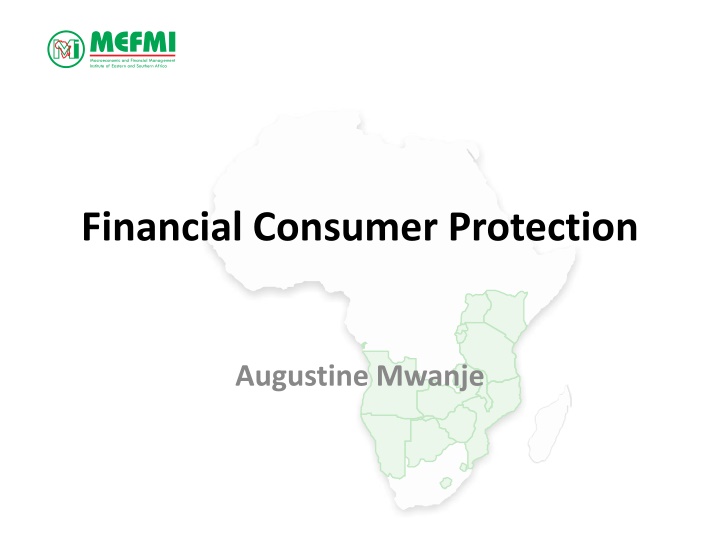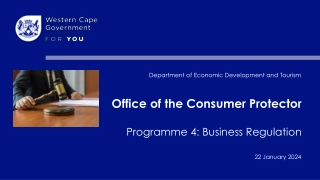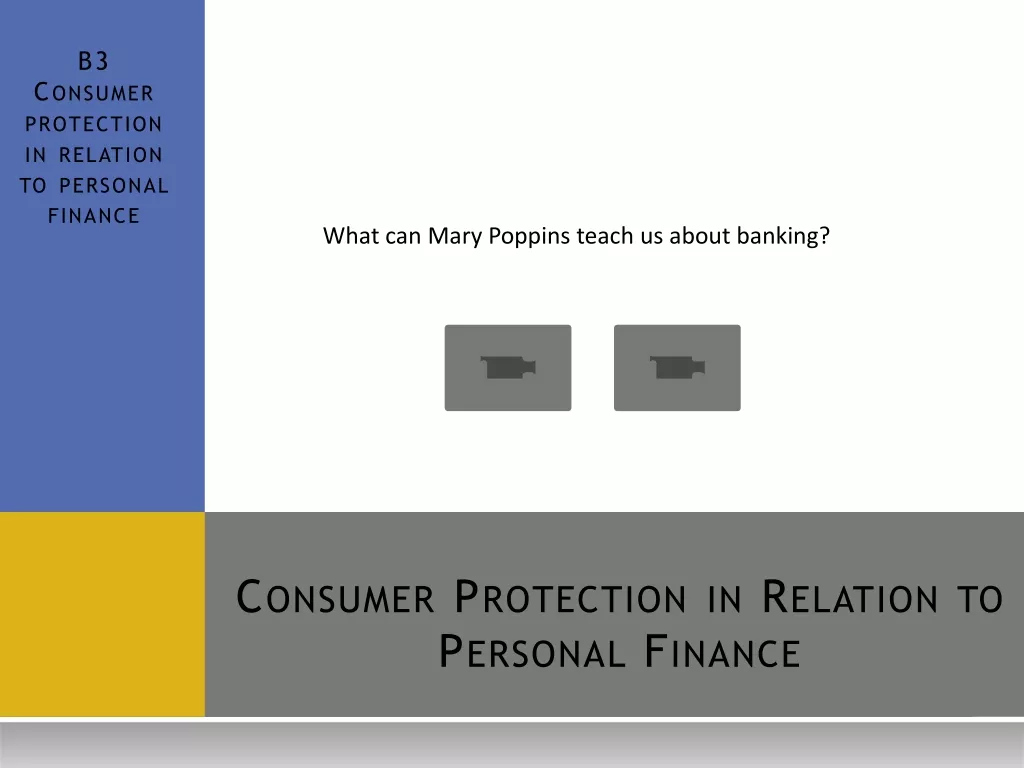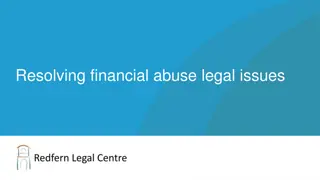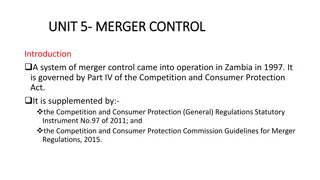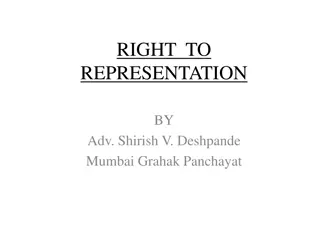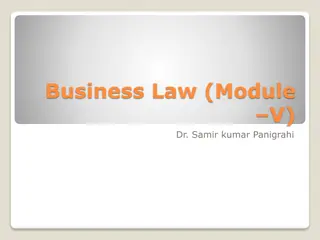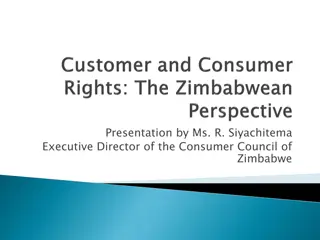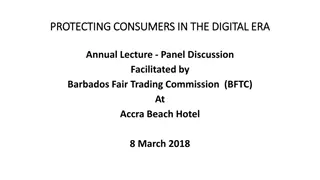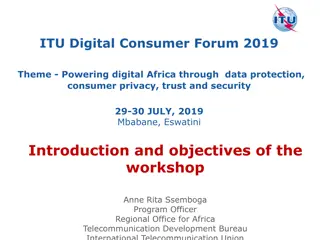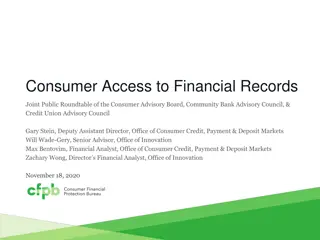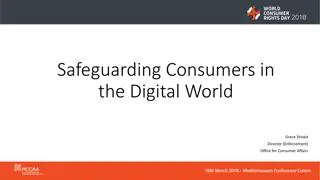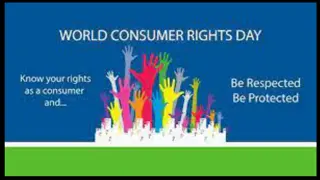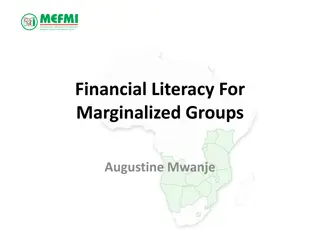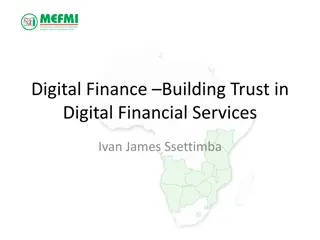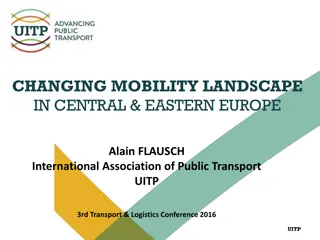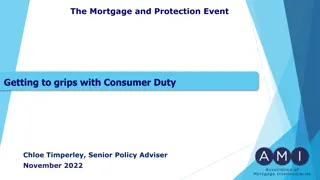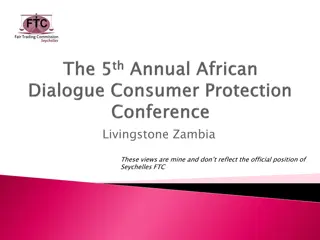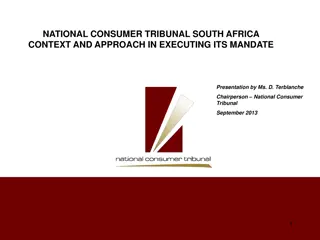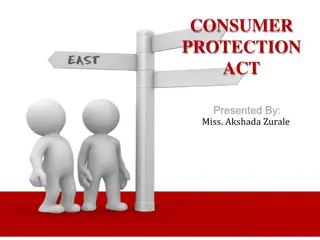Financial Consumer Protection Initiatives in Eastern and Southern Africa
Institute of Eastern and Southern Africa emphasizes the importance of financial literacy and consumer protection post the global financial crisis. Financial consumer protection ensures fair treatment, transparency, and effective recourse mechanisms for clients. It complements financial literacy and regulatory measures for better consumer outcomes.
Download Presentation

Please find below an Image/Link to download the presentation.
The content on the website is provided AS IS for your information and personal use only. It may not be sold, licensed, or shared on other websites without obtaining consent from the author.If you encounter any issues during the download, it is possible that the publisher has removed the file from their server.
You are allowed to download the files provided on this website for personal or commercial use, subject to the condition that they are used lawfully. All files are the property of their respective owners.
The content on the website is provided AS IS for your information and personal use only. It may not be sold, licensed, or shared on other websites without obtaining consent from the author.
E N D
Presentation Transcript
Macroeconomic and Financial Management Institute of Eastern and Southern Africa Financial Consumer Protection Augustine Mwanje
Macroeconomic and Financial Management Institute of Eastern and Southern Africa Introduction One key lesson learnt from the global financial crisis is the urgent need to place financial literacy and consumer protection on top of the national, regional and global agendas. Protecting customers and ensuring they are treated fairly by financial institutions is the essence of market conduct policy and law. 2
Macroeconomic and Financial Management Institute of Eastern and Southern Africa Overview of Financial Consumer Protection Consumer protection is often discussed in terms of the rights and responsibilities of both financial service providers and clients. Clients need to develop the capability to assess product offerings; to do this, they have the right to ask questions about products. Providers have the responsibility to respond respectfully. 3
Macroeconomic and Financial Management Institute of Eastern and Southern Africa Overview of Financial Consumer Protection Financial consumer protection sets clear rules of conduct for financial institutions when dealing with their customers to ensure that they: Receive information to allow them to make informed decisions Are not subject to unfair or deceptive practices; and Have access to recourse mechanisms to resolve disputes. 4
Macroeconomic and Financial Management Institute of Eastern and Southern Africa Overview of Financial Consumer Protection Financial literacy, financial consumer protection measures, prudential regulation and financial inclusion initiatives are complementary to one another, rather than alternatives. To improve the effectiveness of disclosure for financial products and services, it is important to tackle both the supply side (financial consumer protection measures) and the demand side (financial literacy initiatives). 5
Macroeconomic and Financial Management Institute of Eastern and Southern Africa Overview of Financial Consumer Protection Regulators are paying increased attention to financial consumer protection, focusing on three broad themes: Transparency Fair Treatment Effective Recourse While these three goals are basic to protecting consumers, it may not be feasible or practical to address them all at once. 6
Macroeconomic and Financial Management Institute of Eastern and Southern Africa Overview of Financial Consumer Protection Efforts towards financial consumer protection should be coordinated among other financial sector regulators (Insurance, Pensions, Capital Markets, etc.) The regulator s challenge is how to balance financial access, financial stability, financial integrity, and consumer protection 7
Macroeconomic and Financial Management Institute of Eastern and Southern Africa Financial Consumer Protection Framework Promotes fair and equitable financial services practices by setting minimum standards for financial services providers in dealing with consumers. Increases transparency in order to inform and empower consumers of financial services. Fosters confidence in the financial services sector. Provides efficient and effective mechanisms for handling consumer complaints relating to the provision of financial products and services. 8
Macroeconomic and Financial Management Institute of Eastern and Southern Africa Financial Consumer Protection Framework The legal mandate of the regulator with regard to financial consumer protection should be clear Regulators should ensure financial services operators put in place effective consumer risk management framework that empower consumers to make informed decisions while promoting professionalism and ethics. 9
Macroeconomic and Financial Management Institute of Eastern and Southern Africa Financial Consumer Protection Framework G 20 High Level Principles Legal, Regulatory and Supervisory Framework Role of Oversight Bodies Equitable and Fair Treatment To Customers Disclosure and Transparency Financial Education and Awareness Responsible Business Conduct of Financial Services Providers and Authorized Agents Protection of Consumer Assets Against Fraud and Misuse Protection of Consumer Data and Privacy Complaints Handling and Redress 10
Macroeconomic and Financial Management Institute of Eastern and Southern Africa Financial Consumer Protection Framework Potential Barriers To Effective consumer protection Through Standards and Guidelines Illiterate clients cannot read publications on consumer protection principles and rights. Fear of not getting a loan often drives client behaviour. Clients do not know their rights or what constitutes a violation. (e.g. abusive debt collection practices, interest computation, etc.) Overestimation of customer knowledge (investment in new product vs. investment in client education) 11
Macroeconomic and Financial Management Institute of Eastern and Southern Africa Financial Consumer Protection Framework Potential Barriers To Effective consumer protection Through Standards and Guidelines (Continued) Potential conflict with profitability (product-specific marketing vs. time spent on client education about new products) Implementing consumer protection principles can be costly for financial institutions (revisions to HR systems, customer feedback and complaints mechanisms, monitoring and compliance). 12
Macroeconomic and Financial Management Institute of Eastern and Southern Africa Financial Consumer Protection Framework Key Activities Developing Key Facts Documents for savings and loans products Strengthening of complaints handling procedures Development of a communications strategy for regulated Financial Institutions, clients and the wider public to raise awareness about their rights as consumers Strengthening supervision of compliance with the financial consumer protection requirements 13
Macroeconomic and Financial Management Institute of Eastern and Southern Africa Conclusion A comprehensive financial consumer protection framework enhances consumer confidence in the financial services industry, while promoting financial stability, growth and innovation. Financial consumer protection efforts should be cost-effective and, the benefits should outweigh the costs of implementation. 14
Macroeconomic and Financial Management Institute of Eastern and Southern Africa Thank You Any Questions? 15
Macroeconomic and Financial Management Institute of Eastern and Southern Africa References and Bibliography Bank Of Uganda Financial Consumer Protection Guidelines (2011) Consumer Protection Regulation in Low-Access Environments: Opportunities to Promote Responsible Finance (Brix & Mckee 2010) G20 High-Level Principles on Financial Consumer Protection (OECD October 2011) A Guide to Regulation and Supervision of Microfinance - Consensus Guidelines (CGAP October 2012) Towards an Effective Framework for Financial Literacy and Financial Consumer Protection in Uganda (GIZ & Bank of Uganda, March 2011) 16
Macroeconomic and Financial Management Institute of Eastern and Southern Africa References and Bibliography Ledgerwood, Joanna, with Julie Earne and Candace Nelson, eds. 2013. The New Microfinance Handbook: A Financial Market System Perspective. Washington, DC: World Bank. doi: 10.1596/978-0-8213-8927-0.License: Creative Commons Attribution CC BY 3.0 17
